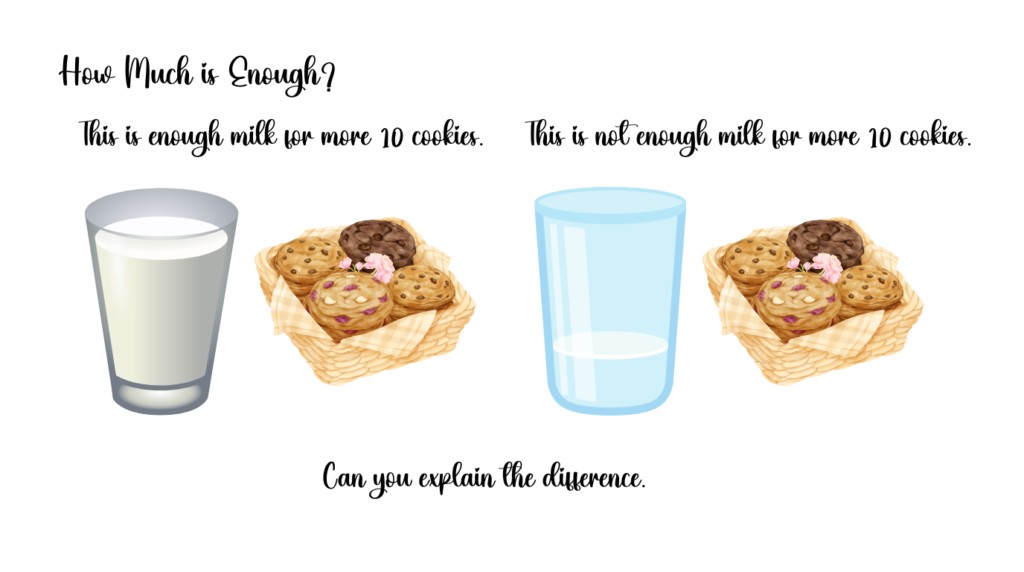
Word order is an essential aspect of English grammar that can significantly impact the meaning and clarity of a sentence. One word that can be challenging to use correctly in a sentence is “enough.” This word readily appears to be used to indicate that something is sufficient or adequate, but where it is placed in a sentence determines the impact to alter its meaning. In this essay, we will explore the different means for using “enough” in a sentence and the impact of word order on its meaning.
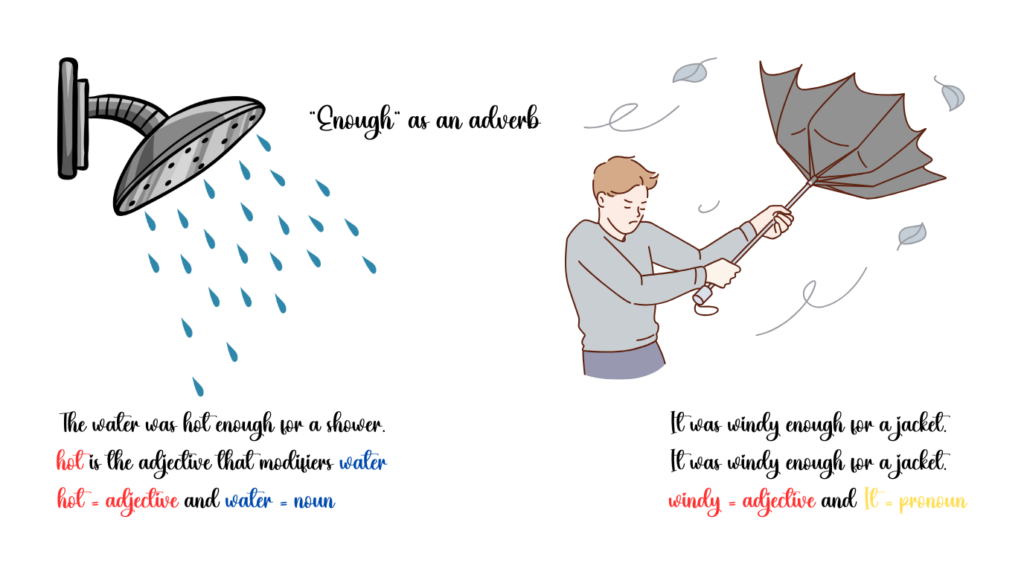
The most common use of “enough” in a sentence is as an adverb, indicating sufficiency or adequacy. In this case, “enough” most likely follows the adjective, which modifies a noun, or adverb, a verb modifier. For instance, “The water was hot enough for a shower,” or “It was windy enough for a jacket.” In these sentences, “enough” modifies the adjectives “hot” and “windy,” respectively, to indicate that the water was sufficiently hot for a shower and that it was windy enough for a jacket.

However, “enough” also appears as a determiner, indicating the sufficiency or adequacy of a noun. In this case, “enough” typically comes before the noun that it changes. For example, “We have enough money to buy a car,” or “He had enough food to feed his family.” In these sentences, “enough” modifies the nouns “money” and “food,” respectively, to indicate that there is sufficient money to buy a car and that he had sufficient food to feed his family.
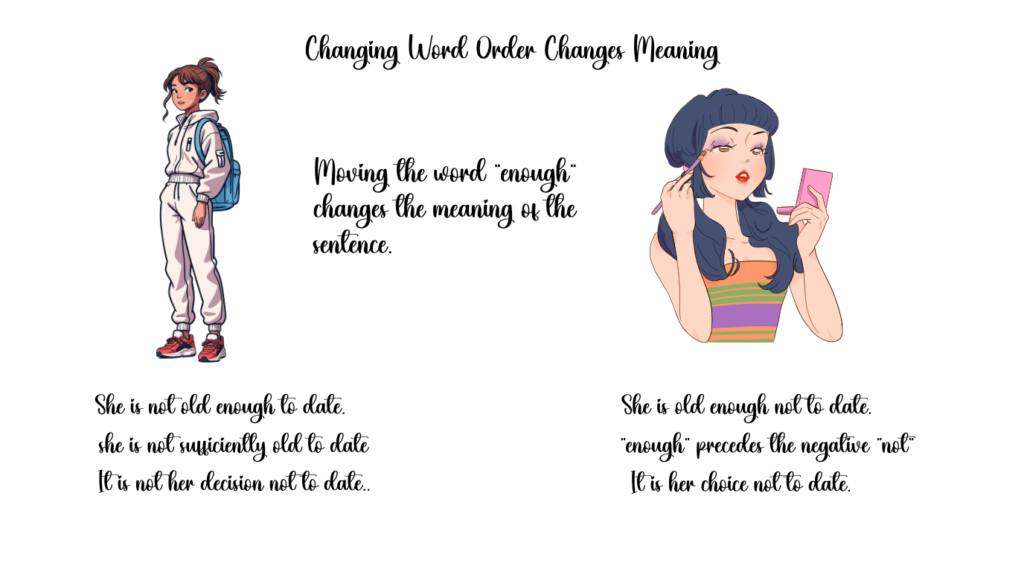
The placement of “enough” in any sentence can greatly dictate its differing meaning. For example, look at the following sentence, “She is not old enough to date,” “enough” follows the adjective “old” to indicate that she is not sufficiently old to date. However, changing the word order and saying, “She is old enough not to date,” the meaning changes entirely. In this sentence, “enough” precedes the negative “not” to indicate that she is sufficiently old to choose not to date.
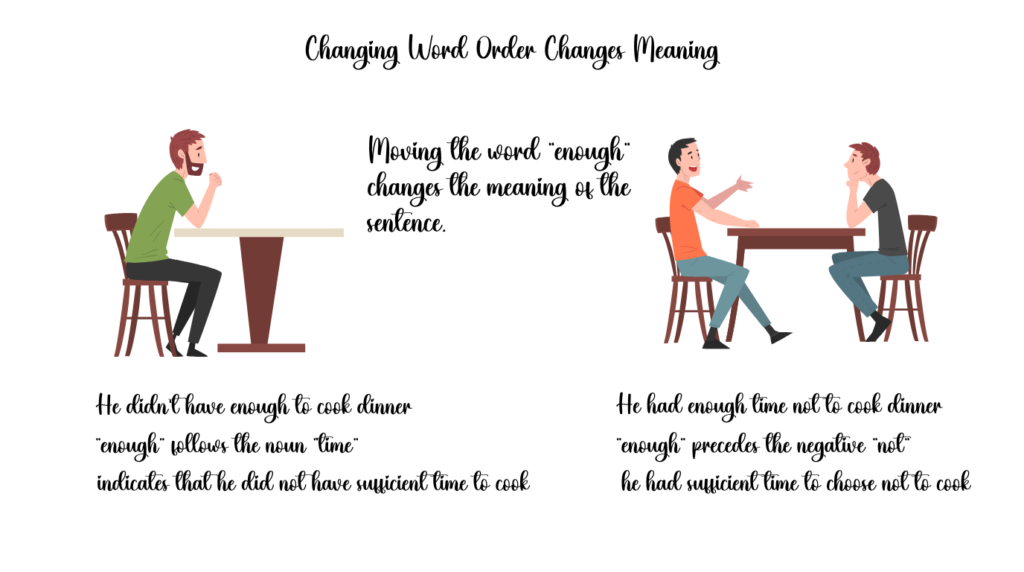
Similarly, consider the sentence, “He didn’t have enough time to cook dinner.” In this sentence, “enough” follows the noun “time” to indicate that he did not have sufficient time to cook dinner. However, changing the word order here and saying, “He had enough time not to cook dinner,” the meaning changes entirely. In this sentence, “enough” precedes the negative “not” to indicate that he had sufficient time to choose not to cook dinner.
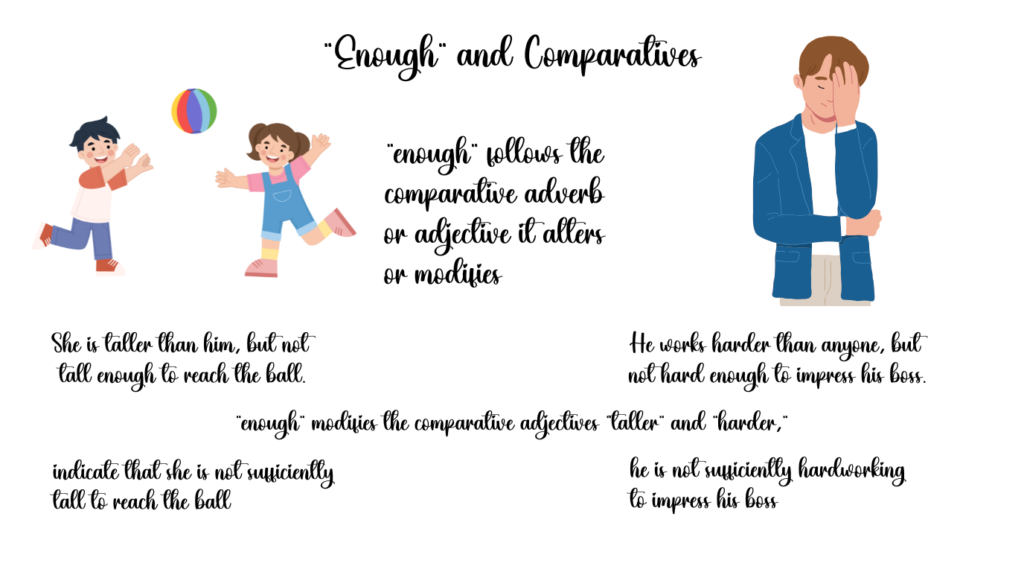
Another way of using “enough” in a sentence is with comparatives. In this case, “enough” follows the comparative adverb or adjective it alters or modifies. For example, “She is taller than him, but not tall enough to reach the ball,” or “He works harder than anyone, but not hard enough to impress his boss.” In these sentences, “enough” modifies the comparative adjectives “taller” and “harder,” respectively, to indicate that she is not sufficiently tall to reach the ball and that he is not sufficiently hardworking to impress his boss.
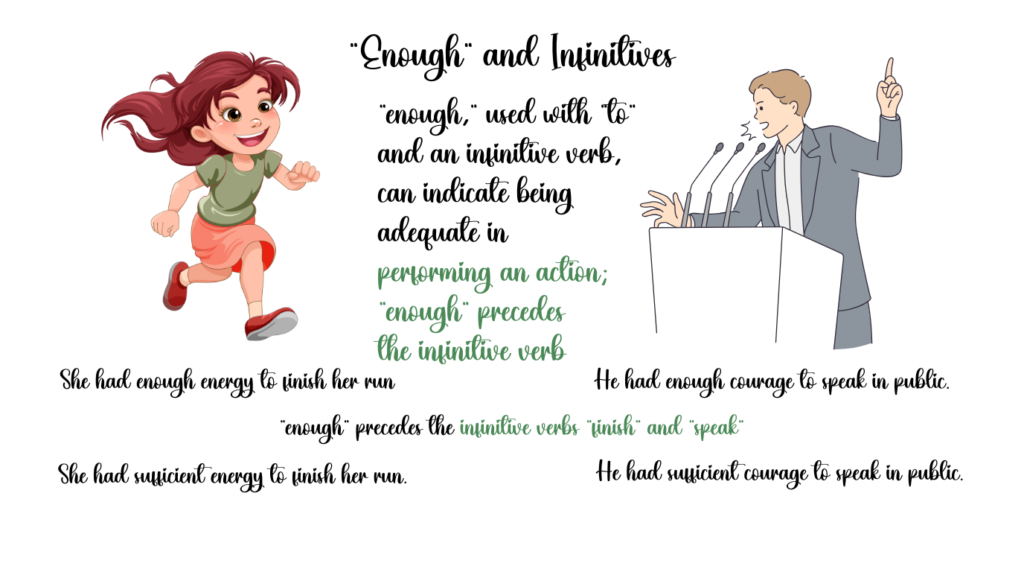
Lastly, “enough,” used with “to” and an infinitive verb, can indicate being adequate in performing an action. In this case, “enough” precedes the infinitive verb. For example, “She had enough energy to finish her run,” or “He had enough courage to speak in public.” In these sentences, “enough” precedes the infinitive verbs “run” and “speak” to indicate that she had sufficient energy to finish her run and that he had sufficient courage to speak in public.
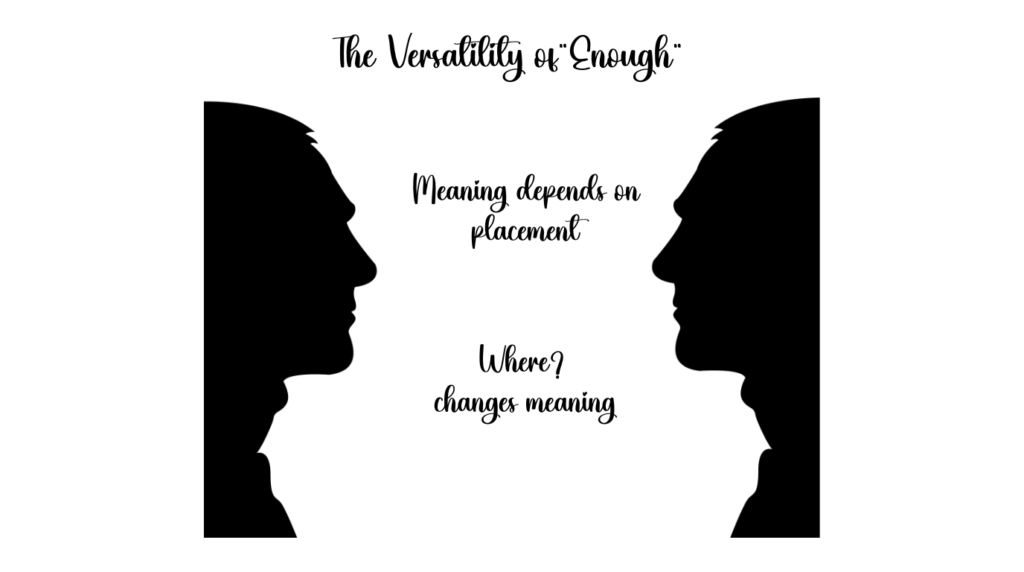
In conclusion, “enough” is a versatile word that can seriously alter the meaning of a sentence in a clear and concise manner. Its placement in a sentence can change its meaning and indicate something is sufficient or adequate in more than one way. It is beneficial to understand the different ways to use “enough” in a sentence and the impact of word order on its meaning to communicate effectively in English.